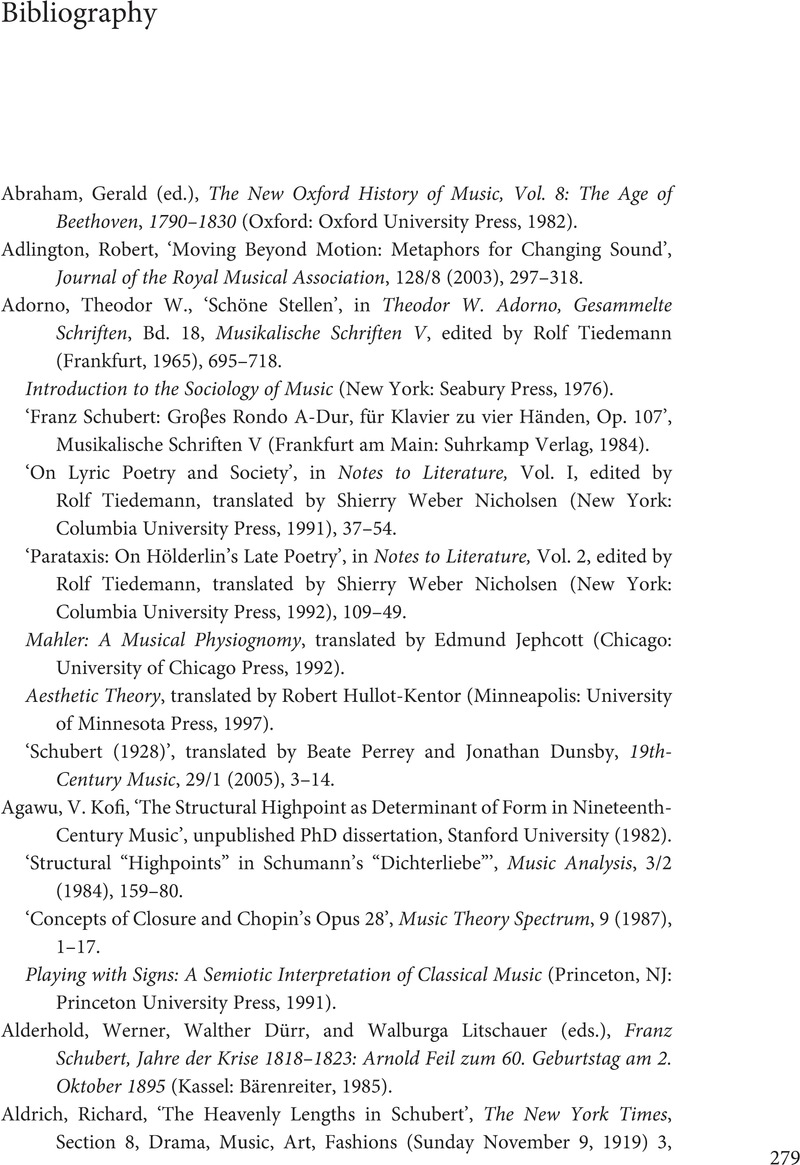Book contents
- Schubert’s String Quartets
- Music in Context
- Schubert’s String Quartets
- Copyright page
- Dedication
- Epigraph
- Contents
- Figures
- Tables
- Music Examples
- Acknowledgements
- Note on the Text
- Introduction: Schubert as Vanishing Point
- Part I Contexts
- Part II Analysis
- Epilogue
- Appendix Schubert’s Compositions for String Quartet
- Bibliography
- Index
- References
Bibliography
Published online by Cambridge University Press: 13 April 2023
- Schubert’s String Quartets
- Music in Context
- Schubert’s String Quartets
- Copyright page
- Dedication
- Epigraph
- Contents
- Figures
- Tables
- Music Examples
- Acknowledgements
- Note on the Text
- Introduction: Schubert as Vanishing Point
- Part I Contexts
- Part II Analysis
- Epilogue
- Appendix Schubert’s Compositions for String Quartet
- Bibliography
- Index
- References
Summary

- Type
- Chapter
- Information
- Schubert's String QuartetsThe Teleology of Lyric Form, pp. 279 - 296Publisher: Cambridge University PressPrint publication year: 2023



